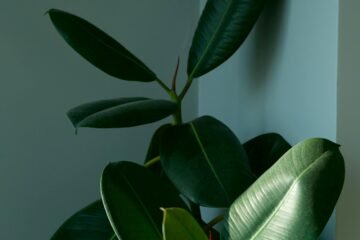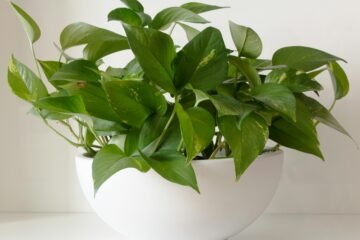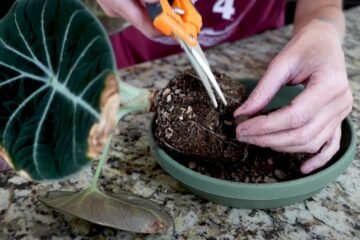Aloe vera, scientifically known as Aloe barbadensis Miller, is a remarkable succulent plant that has captured the attention of gardeners and health enthusiasts alike. Originating from the Arabian Peninsula, aloe vera is now cultivated worldwide, prized for its hardy nature, striking appearance, and numerous medicinal properties. Its thick, fleshy leaves contain a gel that has been used for centuries to treat various skin conditions, burns, and minor wounds. This versatile plant is not only a practical addition to any garden but also an aesthetic one, with its rosette of green, spiky leaves providing a touch of the exotic. Known for its low maintenance requirements and adaptability, aloe vera is an excellent choice for both novice and experienced gardeners looking to add a resilient, beneficial plant to their collection.



| Common Name | Aloe vera |
| Botanical Name | Aloe barbadensis miller |
| Family | Asphodelaceae |
| Plant Type | Succulent, herb, perennial |
| Mature Size | 12-36 in. tall, 6-12 in. wide |
| Sun Exposure | Full, partial |
| Soil Type | Sandy |
| Soil pH | Acidic |
| Bloom Time | Summer |
| Flower Color | Yellow, red, orange |
| Hardiness Zones | 10-12 (USDA) |
| Native Area | Africa |
| Toxicity | Toxic to humans,toxic to pets |
Aloe Vera Care
Caring for aloe vera is straightforward with the right knowledge and practices. By providing appropriate light, watering sparingly, ensuring good drainage, and maintaining warm temperatures, you can enjoy a thriving aloe vera plant. With its minimal needs and numerous benefits, aloe vera is an excellent addition to any plant collection.
Light Requirements
Bright, Indirect Light: Aloe vera thrives in bright, indirect sunlight. Place your plant near a sunny window where it can receive ample light. Too much direct sunlight, especially in the hottest part of the day, can scorch the leaves, leading to brown or white spots. Ideally, position your aloe vera in a south or west-facing window where it can get about 6-8 hours of light daily. If natural light is insufficient, consider using a grow light to supplement.
Watering
Infrequent but Deep Watering: Aloe vera is drought-tolerant and prefers to dry out between waterings. Water the plant deeply, allowing the excess to drain out through the pot’s drainage holes. Wait until the top 1-2 inches of soil are completely dry before watering again. During the winter months, reduce watering frequency significantly since the plant’s growth slows down. Overwatering is the most common mistake and can lead to root rot, which is often fatal to the plant. A good rule of thumb is to water approximately every 3 weeks and even less during the winter.
Soil and Potting
Well-Draining Soil: Aloe vera thrives in soil that mimics its natural, sandy habitat. Use a succulent or cactus potting mix to ensure good drainage. If using regular potting soil, amend it with perlite or coarse sand at a ratio of about 2:1 to improve drainage.
Proper Pot: Choose a pot with drainage holes to prevent water from sitting at the bottom, which can cause root rot. Terracotta pots are particularly good as they allow moisture to evaporate more quickly, helping to prevent water from accumulating at the roots.
Temperature and Humidity
Warm Temperatures: Aloe vera prefers temperatures between 60-75°F (15-24°C). It can tolerate higher temperatures but should be protected from frost, as it is not cold-hardy. If you live in a cooler climate, ensure your aloe vera is not exposed to temperatures below 50°F (10°C), as prolonged exposure to cold can damage the plant.
Moderate Humidity: Aloe vera does well in average household humidity levels, typically between 40-60%. There is no need for additional humidity, and the plant can thrive in drier environments. Avoid placing the plant in extremely humid areas like bathrooms, as too much moisture can lead to fungal issues.
Fertilization
Occasional Feeding: Aloe vera doesn’t require heavy feeding. During the growing season (spring and summer), you can feed it with a balanced, water-soluble fertilizer diluted to half strength once a month. Look for fertilizers specifically formulated for succulents, which provide the right balance of nutrients. Reduce feeding in fall and winter when the plant’s growth slows, as over-fertilizing can lead to nutrient burn and other issues.
Pruning and Maintenance
Remove Dead Leaves: Occasionally prune off any dead or damaged leaves at the base to keep the plant healthy and attractive. Use a clean, sharp knife or scissors to make clean cuts, which will help prevent infection. Removing dead or unhealthy leaves also allows the plant to focus its energy on new growth.
Repotting
Repotting Every 2-3 Years: Aloe vera plants grow slowly and typically need repotting every 2-3 years or when they outgrow their pot. Signs that your plant needs repotting include roots growing out of the drainage holes or the plant becoming top-heavy. When repotting, choose a pot slightly larger than the current one and refresh the soil with a well-draining mix. Gently remove the plant from its current pot, taking care not to damage the roots, and place it in the new pot. Water sparingly after repotting to help the plant adjust.
Types of Aloe Vera
Over 500 species of aloe exist, but not all are cultivated for growing in the garden or home. Some have thorny leaves, some trail and climb, and others are round in shape. Aloe vera is a fascinating succulent plant known for its medicinal properties and striking appearance. While Aloe barbadensis Miller is the most famous, the aloe family includes various types, each with unique characteristics and benefits.
Aloe Barbadensis Miller: Also known as the medicinal aloe, it’s the most common type used for its healing properties. Its gel is widely utilized in skincare products and natural remedies for burns and skin irritations.
Aloe Arborescens: This variety, known as the candelabra aloe, boasts multiple stems and narrow, spiky leaves. It’s favored in traditional medicine in various cultures and thrives in full sun.
Aloe Polyphylla: Recognized for its captivating spiral leaf arrangement, the spiral aloe is primarily grown for its ornamental appeal. It requires cooler temperatures and partial shade to flourish.
Aloe Variegata: With its variegated leaves featuring white stripes or spots, the tiger aloe adds an exotic touch to indoor spaces. It’s easy to care for and suits well-draining soil and bright, indirect light.
Propagating Aloe Vera


Aloe vera is best propagated by replanting the offsets (the pups) that develop at the base of the plant. Mature plants will often produce many pups, making it easy for you to relocate them to other pots or parts of the garden, or you can gift them to friends.
Selecting Pups: Look for small offsets growing at the base of the parent plant. These pups should have developed their own root system, making them ready for propagation.
Preparation: Gently remove the pup from the parent plant by carefully pulling it away or using a clean knife to cut it off. Ensure the pup has some roots attached for successful propagation.
Drying: Allow the cut end of the pup to dry for a day or two to prevent rotting when planted. This step helps the wound to heal and reduces the risk of infection.
Planting: Once the pup has dried, plant it in a small pot filled with well-draining succulent soil. Place the pup in the soil, covering the roots and the bottom part of the stem.
Watering: Water the newly planted pup sparingly, ensuring the soil is moist but not soggy. Overwatering can lead to root rot, so it’s crucial to maintain a balance.
Placement: Put the pot in a location with bright, indirect sunlight. Avoid direct sunlight initially, as it can scorch the delicate new growth.
Maintenance: Keep an eye on the pup’s growth and adjust watering as needed. Once it establishes roots and starts growing, treat it like a mature aloe vera plant, following standard care guidelines.
Blooming Aloe Vera Faster and More Efficiently
Aloe vera typically blooms in late winter to early spring, although it can be rare for indoor plants to bloom. To encourage blooming:
- Light: Ensure your aloe vera gets plenty of bright, indirect sunlight. Outdoor sunlight during the growing season is ideal, but be cautious of too much direct sun, which can damage the leaves.
- Temperature: Maintain a warm environment with consistent temperatures around 70-80°F (21-27°C). Avoid exposing the plant to cold drafts or sudden temperature changes.
- Fertilization: Use a balanced, water-soluble fertilizer diluted to half strength every month during the growing season to provide essential nutrients that support blooming.
Common Pests & Plant Diseases
Pets Diseases of Aloe Vera::
1. Toxicity: Aloe vera contains compounds like saponins and anthraquinones, which can be toxic to pets if ingested in large quantities. While the gel inside the leaves is generally safe for external use on humans, it can cause gastrointestinal upset, vomiting, diarrhea, and potential liver damage in dogs and cats.
2. Symptoms: If a pet ingests aloe vera, symptoms may include drooling, lethargy, loss of appetite, abdominal pain, tremors, and changes in urine color. In severe cases, it can lead to more serious health issues, so it’s essential to monitor pets closely if they come into contact with the plant.
3. Precautions: To prevent accidental ingestion, place aloe vera plants out of reach of pets or consider keeping them in areas inaccessible to curious animals. If you suspect your pet has ingested aloe vera or is exhibiting symptoms of toxicity, seek veterinary care immediately.
Plant Diseases of Aloe Vera:
1. Root Rot: Overwatering or poor drainage can lead to root rot, a fungal disease that affects the roots of aloe vera plants. Symptoms include wilting, yellowing, and mushy, discolored roots. To prevent root rot, ensure proper drainage and water the plant sparingly.
2. Leaf Spot: Leaf spot diseases, caused by fungal pathogens, can manifest as dark or discolored spots on the leaves of aloe vera. These spots may gradually enlarge and cause the leaves to wither and die. Improve air circulation and avoid overhead watering to reduce the risk of leaf spot.
3. Fungal Infections: Various fungal infections, such as anthracnose and powdery mildew, can affect aloe vera plants, especially in humid environments. These diseases cause symptoms like white powdery patches, dark spots, or fuzzy growth on the leaves. To manage fungal infections, ensure proper air circulation and avoid overcrowding plants.
4. Pest Infestations: While aloe vera is relatively resistant to pests, it can occasionally attract aphids, mealybugs, and spider mites. These pests feed on the sap of the plant, causing wilting, yellowing, and stunted growth. Use natural or chemical pest control methods to manage infestations and prevent damage to the plant.
5. Viral Diseases: Aloe vera plants can also be susceptible to viral infections, though these are less common. Viral diseases can cause symptoms like leaf distortion, yellowing, and stunted growth. Unfortunately, there are no effective treatments for viral infections, so prevention is key through proper sanitation and avoiding contact with infected plants.



